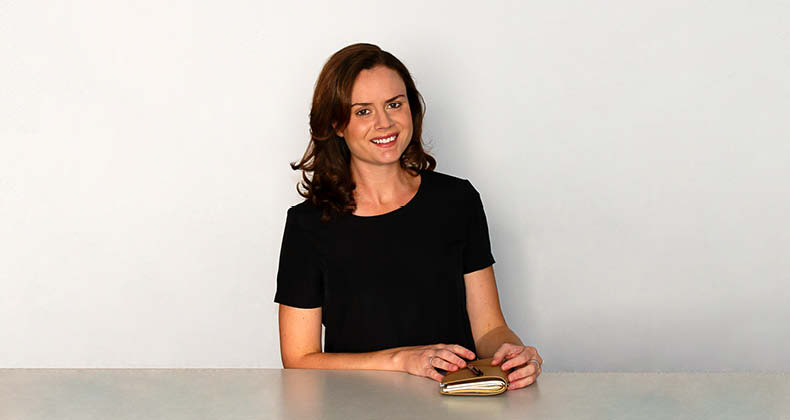batyr’s mental health innovation improving support for young people
Dominic had just graduated from university when he was admitted to hospital after being diagnosed with bipolar disorder. His experience with mental illness wasn’t too dissimilar from Sebastian’s, who also suffered silently with mental ill health while at university. While there wasn’t a program or service to bring them together at the time, today there is.
Now a St. George Kick Start finalist, Sebastian went on to found batyr – a for-purpose preventative mental health organisation – in 2011 and, today, Dominic gives up his time as a speaker in the batyr2peer program, which connects hospitalised young people with others who’ve lived through a similar experience.
4 minute read
What’s in this article:
- batyr’s batyr2peer program connects young people suffering from mental ill-health with others who have personally lived through the same experience
- The batyr2peer program uses peer-to-peer storytelling to help young people hospitalised for mental ill health know what to expect from the hospital experience and understand the support services available during and beyond their admission
- batyr is a finalist in the existing business category of St. George’s Kick Start 2020 program

The elephant in the room
The frustrating and isolating experience of living silently with mental ill health was what prompted Sebastian Robertson to start batyr.
“When Sebastian reflects on his time during university, he often says it would have been helpful to hear from another young person who had lived through and overcome a similar experience. That’s what motivated him to start the organisation,” says Sheree Webber, Project Lead at batyr.
Sebastian named his organisation batyr after ‘the talking elephant from Kazakhstan’ of the same name who knew upwards of 20 phrases. The idea behind the name was to give a voice to the elephant in the room, and to encourage people to have meaningful conversations and start talking about mental health.
Reducing stigma through storytelling
Over time, the need for batyr’s services became even more important. Suicide is the leading cause of death for people aged 15 to 44. One in five Australians suffer from a significant mental illness any given year. No other issue affects more Australians than mental illness.
“Research shows 70% of mental illnesses are developed by the age of 25, so it’s extremely critical that we are effectively supporting this age group and giving them the best possible chance to live mentally healthy lives,” says Sheree.
“Stigma around mental health is the leading barrier to people reaching out for support and research also indicates one of the best ways to reduce stigma is by sharing stories.”
A mental health innovation
The organisation’s latest mental health innovation, batyr2peer, is a digital peer support program, aiming to give young people a better understanding of what to expect during their time in hospital. It uses a three-part video series that focuses on the different stages of hospitalisation – early admission, mid-admission and discharge planning – as well as a debriefing workbook and other resources to facilitate further discussion between the young person and their treatment team, and promote further reflection.
“Being admitted into a mental health unit, whether for the first time or for a subsequent admission is a daunting experience for a young person,” says Sheree. “While already experiencing mental and emotional distress, the process is confronting, frustrating and overwhelming.”
For Dominic, a mental health innovation such as batyr2peer would have made a powerful difference to his recovery. “Knowing that someone else has gone through similar personal life battles and hardships, and was able to recover and grow from the circumstances, helps to provide hope that there is a future for you.” he says.
Enhancing the quality of care
batyr is currently piloting the batyr2peer program at two hospitals in NSW and the feedback so far has been overwhelmingly positive. Results collected at Hornsby Hospital – one of the hospital’s where it’s being trialled – show 71% of young people in the program and 78% of medical professionals helping to administer the program provided positive feedback.
“Feedback we’ve received so far suggests the program enhances the quality of care for a young person by facilitating valuable conversations and breaking down barriers between the young person and their treatment team,” says Sheree.
“It’s demonstrated that it can be successful in providing a young person hope for recovery, which is crucial in ensuring they’re motivated and proactive in engaging in support services and behaviours that are going to have a positive impact on their wellbeing.”
The batyr2peer program’s ability to solve a critical need in society and make a profound impact on local communities is why batyr is a finalist in St. George’s Kick Start 2020 program. Should it win one of the two coveted prizes, the organisation has plans to roll out its mental health innovation across all NSW public health units.
Conclusion
The only hurdle batyr faces is scaling the batyr2peer program, ensuring that young people at high risk for mental ill-health have access to support services that people like Dominic didn’t. If they succeed, they’ll be well on their way to reducing stigma, increasing help-seeking rates and ultimately creating a more mentally healthy Australia.
batyr is a Kick Start 2020 finalist. To learn more about other finalists in this category, visit the St. George Kick Start hub.